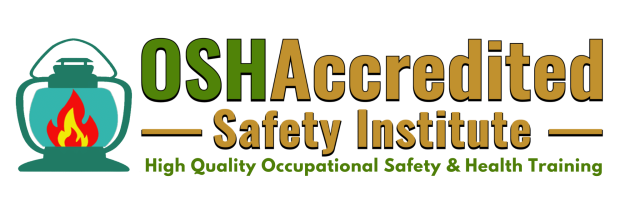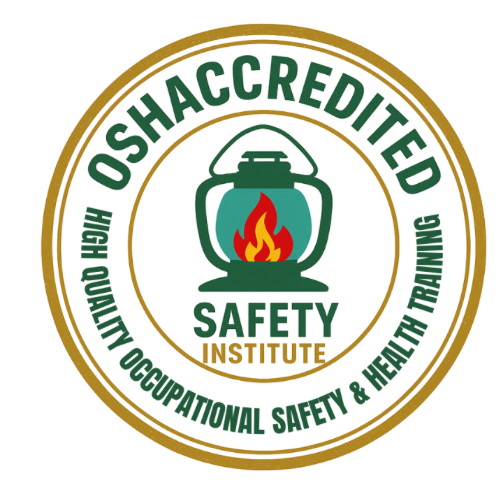The Role of Safety Courses in Promoting Awareness on Construction Sites
The Role of Safety Courses in Promoting Awareness on Construction Sites
The construction industry is one of the most essential yet hazardous sectors globally. Workers face daily risks from heights, heavy machinery, moving traffic, and unpredictable weather conditions. Despite advancements in equipment and regulations, construction remains a leading contributor to workplace injuries and fatalities. The key to reducing these risks lies in increasing safety awareness through access to safety training and from carefully developed safety courses.
Through comprehensive OSHA courses, OSHA training, and modern online safety and health training, workers and employers gain the knowledge needed to identify hazards, follow protocols, and create a safer, more compliant work environment. This blog explores how safety courses promote awareness on construction sites, supported by alarming statistics and a detailed look at essential safety topics such as fall protection, crane operations, and site planning.
What Is Construction?
Construction involves the building, repairing, and maintaining of structures such as buildings, roads, bridges, and other infrastructure. The industry encompasses various trades and roles, including carpenters, electricians, heavy equipment operators, and flaggers. Every job site contains a unique set of hazards, which can be mitigated through proper safety training and education.
Construction work is inherently dynamic. Unlike factory settings, which are controlled environments, construction sites change daily. This variability heightens the importance of ongoing OSHA training and online safety and health training to keep safety practices up to date.
Construction Injuries and Fatalities: A Global and National Crisis
Globally, construction accounts for a significant share of workplace incidents. According to the International Labor Organization (ILO), more than 60,000 fatal accidents occur annually in the construction sector worldwide. In the United States:
- The U.S. Bureau of Labor Statistics (BLS) reported 1,069 construction worker fatalities in 2022 alone.
- Construction accounted for nearly 1 in 5 worker deaths across all industries.
- Non-fatal injuries are also high, with over 170,000 injuries reported by private construction employers in 2022.
These figures highlight a critical need for enhanced safety education, especially in high-risk activities like working at heights, operating cranes, and working near traffic. Implementing OSHA courses and online safety training can dramatically improve awareness and reduce preventable incidents.
Why Safety Awareness Matters on Construction Sites
Awareness is the first line of defense against workplace accidents. When workers understand potential hazards and how to avoid them, they are more likely to follow procedures, use protective equipment, and intervene when unsafe conditions arise. Safety awareness leads to:
- Fewer injuries and fatalities
- Lower insurance costs and workers’ compensation claims
- Better project efficiency and fewer delays
- Stronger compliance with OSHA and other regulatory bodies
Investing in OSHA training or enrolling workers in online safety and health training is not just a box to check it’s a proactive way to build a safety-first culture on every job site.
The Benefits of Online Health and Safety Training
In today’s fast-paced construction environment, online safety training offers a flexible and efficient way to train workers. Whether for onboarding new hires or offering refresher safety courses, the benefits of online safety training platforms are extensive:
- Convenience and Flexibility
Workers can complete courses at their own pace, from any location, which is particularly useful for companies with multiple job sites.
- Cost-Effective
Online training reduces the need for on-site instructors, printed materials, and travel costs.
- Consistent Content Delivery
All workers receive the same standardized content, ensuring consistent understanding of safety protocols.
- Real-Time Tracking
Supervisors can track training progress, compliance, and certifications, helping maintain regulatory documentation.
- Updated Material
Online safety training platforms can be regularly updated to reflect new OSHA standards, emerging hazards, or updated best practices.
Key Topics Promoted Through Safety Courses
Effective safety courses, especially those based on OSHA training, cover a wide range of topics that are crucial for hazard awareness and prevention on construction sites. Below are some of the most impactful areas:
- Fall Protection
Falls remain the leading cause of death in construction. In 2022, falls accounted for nearly 35% of all construction fatalities in the U.S. Safety courses cover:
- Proper use of harnesses and fall arrest systems
- Guardrail requirements
- Ladder and scaffold safety
- Inspection of fall protection equipment
- Crane and Heavy Equipment Safety
Cranes and heavy machinery pose crushing, striking, and electrocution hazards. Training includes:
- Load capacity and weight distribution
- Safe lifting practices
- Signal person requirements
- Blind spot awareness
- Traffic Control Plans
For roadside or urban construction, traffic poses a major risk to workers. Safety courses address:
- Setting up proper signage and barricades
- Role and training of flaggers
- Coordination with local traffic authorities
- Use of online safety and health training for temporary traffic control certification
- Site Safety Meetings and Toolbox Talks
Regular safety meetings reinforce lessons and adapt plans to current site conditions. These meetings:
- Foster a culture of accountability
- Encourage open discussion of near misses
- Update crews on hazards and daily changes
- They are often supported by digital modules from online safety training platforms
- Signage and Hazard Communication
Clear signage is critical for identifying hazards like electrical risks, open trenches, or restricted zones. OSHA training emphasizes:
- Use of standardized color codes and warning symbols
- Location-specific signage placement
- Lockout/tagout procedures
- Work-Rest Cycles and Heat Stress Awareness
Especially during summer, heat stress becomes a major concern. Safety courses help workers:
- Recognize signs of heat exhaustion and heat stroke
- Stay hydrated and take regular breaks
- Understand acclimatization and how it prevents illness
OSHA Courses: Compliance and Awareness in One
Taking OSHA courses whether it’s the OSHA 10-hour or OSHA 30-hour construction training provides workers and supervisors with a solid foundation in identifying and controlling site hazards. OSHA training covers:
- Worker rights and employer responsibilities
- Hazard identification and reporting
- Emergency response planning
- Specific topics like electrical safety, PPE, and confined spaces
The accessibility of online safety training ensures that even small contractors and remote workers receive the same high-level education as those in larger companies.
Creating a Culture of Continuous Learning
One of the most overlooked aspects of construction safety is the need for continuous education. Hazards evolve with changing equipment, new materials, and weather conditions. By integrating online safety and health training into ongoing development, companies can:
- Keep workers up to date with the latest regulations
- Promote cross-training among roles
- Empower workers to take ownership of their safety
- Support supervisors in building team-wide accountability
Final Thoughts
Construction work will always carry risk, but the degree of that risk is largely determined by how prepared the workforce is. Safety awareness is the foundation of prevention, and safety courses are the tools to build that foundation. Whether it’s a classroom-based session or a modern online safety training course, education saves lives.
With thousands of preventable injuries and fatalities occurring each year, now is the time for contractors, project managers, and workers to invest in online safety and health training and commit to a culture of awareness, accountability, and continuous improvement.










